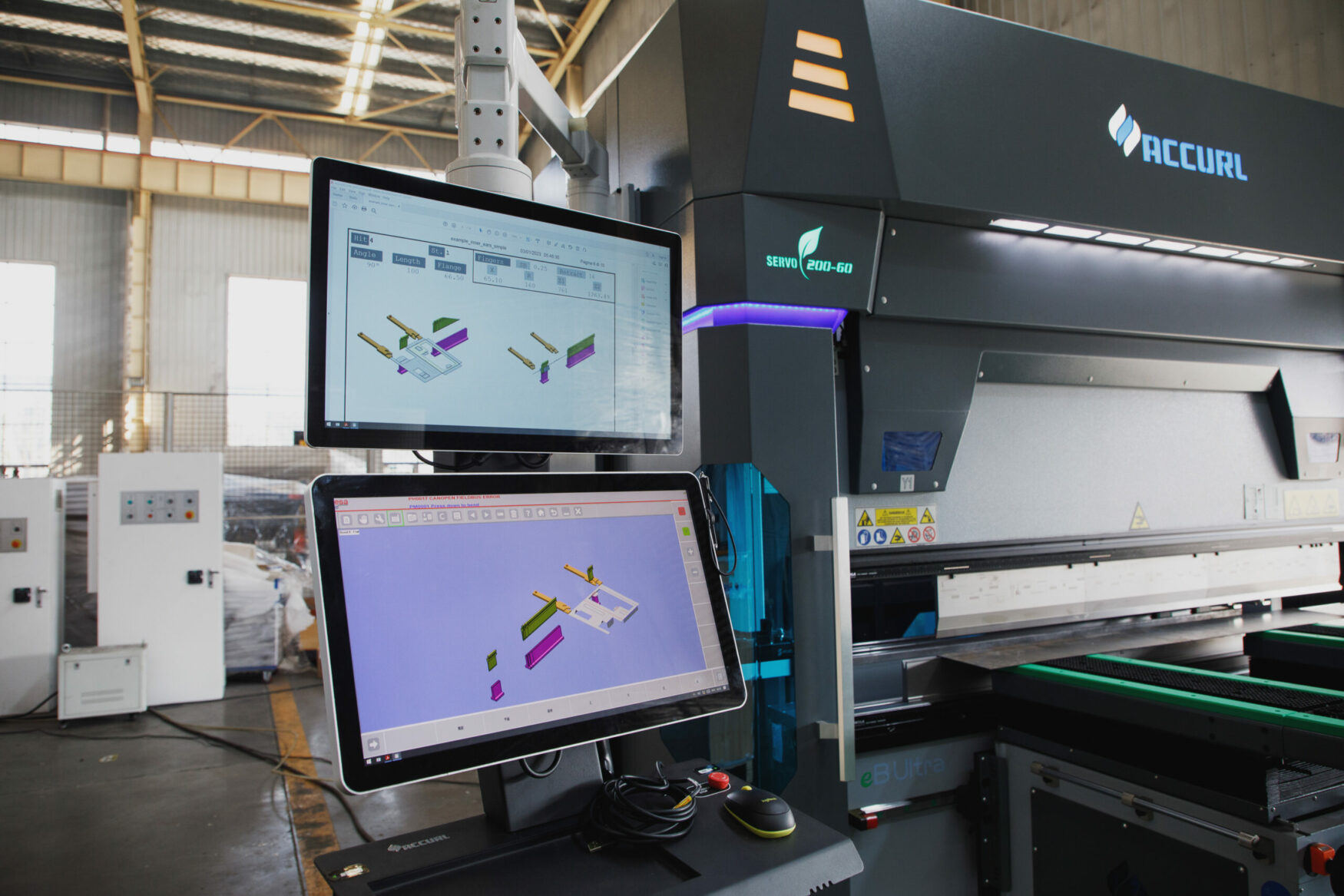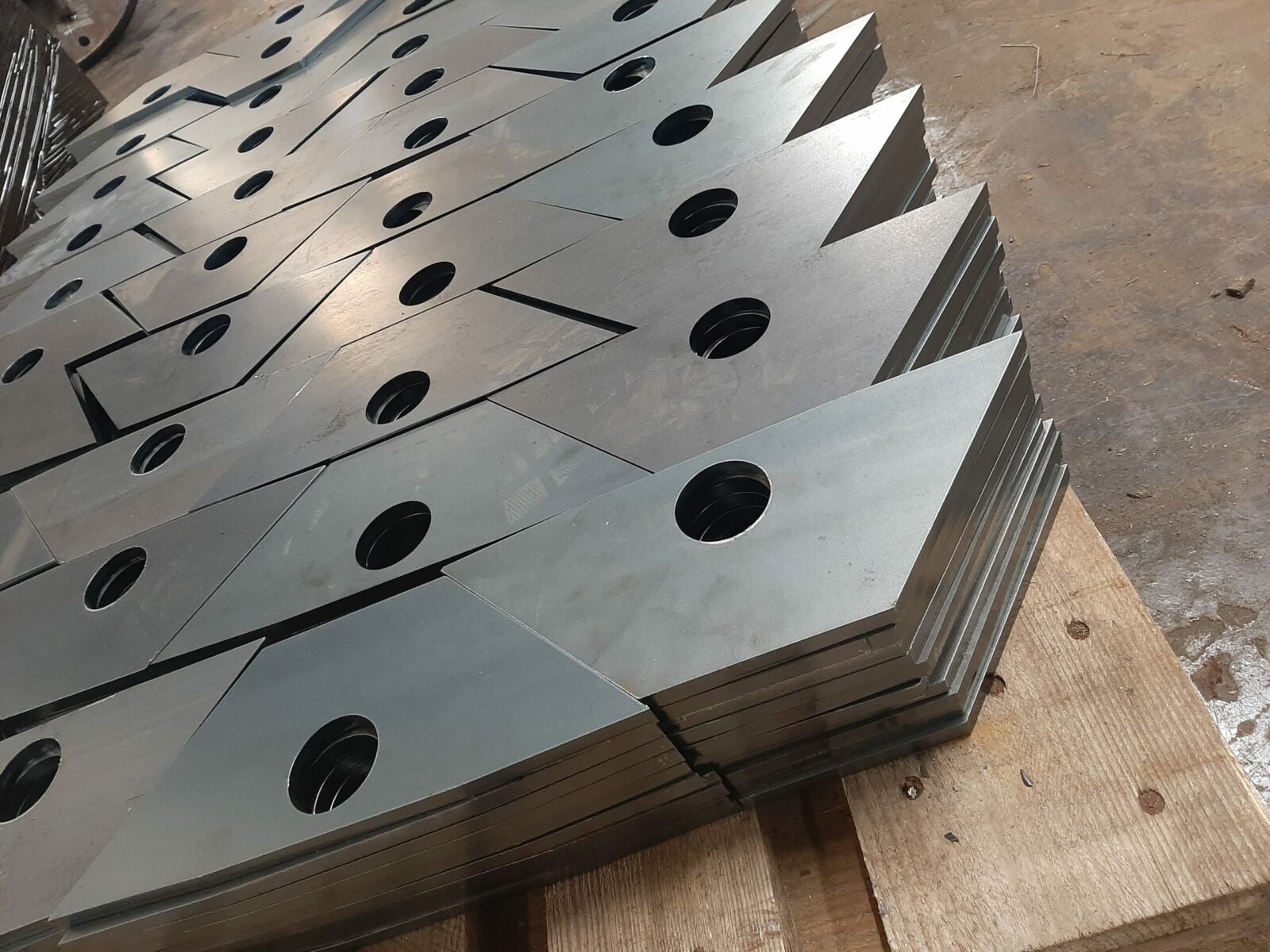Press Brakes are incredibly versatile machines, offering precision, efficiency, safety, and durability. However, there’s a good chance you aren’t leveraging your press brake’s full potential, which is why our experts at Accurl put together this guide jam-packed with press brake machine optimization tips.
Keep reading to learn about enhancing press brake performance with tips on machine set-up, toling, bending techniques, maintenance, and more.

First, why is it so important to optimize press brake performance?
Why You Should Maximize Press Brake Performance
Press brakes are invaluable machines, with powerful models like the Accurl Electrical Press Brake eB Ultra being more precise, easy to operate, and efficient than ever before. However, many factors come into play when it comes to performance, including the setup, operation, materials, and more.
In fact, without maximizing press brake efficiency, advanced laser-cutting machines can outmatch the speed of Press Brakes. That means that your Press Brakes can become a bottleneck in your operations, slowing everything down.
Because of that, it’s important to use press brake machine performance hacks to increase the speed of production without compromising quality. The result of increasing productivity with press brakes is higher profitability and less stress on your production floor.
So, how do you go about enhancing press brake performance? Keep reading to find out!
1. Optimizing Machine Setup and Tooling
Press brake performance begins and ends with machine set-up and tooling. This starts with selecting the right materials for your operation. Since there are a variety of different brake dies and machine configurations depending on material type, thickness, and other factors, make sure you properly organize your approach.
For example, you can group tools based on the type of job or bend or by the material thickness, so you can maintain an efficient press brake operation. Plus, it allows operators to easily transition between different machines or jobs, optimizing your entire operation.
Additionally, you want to organize the entire workplace by promoting a clear set of Standard Operating Procedures (SOPs) that promote the most efficient production. Part of this begins with proper press brake machine setup.
The longer the setup takes, the less time to bend materials and the higher cost per part. However, you don’t want to sacrifice accuracy by acceleration setup. Instead, make sure you operators have a clear procedure to follow during the set up process.
Proper set up should involve reviewing the bends, materials, and thicknesses, selecting the proper tooling, determining the tooling position, programming the press brake, completing a test bend, correcting the program, and finally producing the desired output.
In order to encourage the most efficient setup process, we recommend having a clear-cut order to follow, keeping materials and tooling organized in the right locations, and training operators to pay attention to where time is wasted so that they can optimize the process.
For example, do they spend too much time looking for tools or is there downtime when starting the machine in the morning? Identifying these things and correcting them is an easy step toward maximizing press brake efficiency.
2. Implementing Efficient Bending Techniques
Possibly the most important of all press brake machine performance hacks is implementing the right, most efficient bending techniques. These techniques include everything from bottoming and air bending to coining and three-point bending. The main thing is to choose the technique best aligned with your operational goals.
Bottoming
Bottoming, or bottom bending, is where the sheet metal is pressed into the bottom of the die. The high force guarantees that the metal reaches the die base. This method is beneficial for highly precise bends, especially with consistent material thicknesses. Just be sure to use bend dedication calculations to account for spring back.
Air Bending
Air bending is one of the most popular press brake bending techniques. It involves resting the material on the die while the punch descends to create the desired bend. Since the sheet metal never contacts the side walls of the die, you can achieve multiple bend angle with a single V die, thereby optimizing efficiency and flexibility. Plus, there is less force required which means it’s good for hydraulic press brakes.
Coining
Coining uses a high amount of pressure to conform the metal to the exact shape of the die, promoting exceptional precision and reduced springback for even more consistency. While this is great, it also puts a lot of wear and tear on the machine.
Three-Point Bending
With this method, the punch and die have three contact points to drive a consistent bend radius regardless of material thickness changes. It’s also perfect for increasing productivity with press brakes as it saves time. Not only that, but it means less wear on the tooling, which is why it’s one of the most popular choices in the 2020s.
3. Maintaining Machine Health and Performance
One of the most impactful press brake machine performance hacks is simply to properly maintain your machine. Doing so not only makes it last longer but will amplify performance in almost every way.
For example, a properly maintained machine will help you ensure precision and efficiency, with fewer breakdowns, lower repair costs, and less downtime. It will run at optimal performance with smooth functions that allow for rapid bending.
To properly maintain your press brake, make sure you set clear daily and weekly cleaning expectations, regular inspections, proper lubrication, and preventative maintenance. Want to know more? Check out our blog on best practices for press brake maintenance.
4. Operator Training and Best Practices
A press brake is only as good as its operator, which is why this is one of the most important press brake machine optimization tips. Training should be thorough including everything from simple operation to advanced topics like tooling, cleaning, maintenance, and safety. Doing so will ensure happy employees while enhancing press brake performance.
Additionally, make sure you offer regular training updates. All operators should understand tooling, drawings, and the specific model of brake you have. For example, a powerful electrical Press Brake like the Accurl eB Ultra offers easier operation with precise controls while others might require more in-depth training.
By properly trining your employees, you can keep your entire operation at full efficiency, safety, and effectiveness. Plus, you’ll be able to train them not only on your press brake but in how it works in conjunction with other machines like laser cutters or roll presses.
Conclusion
By following these tips for maximizing your press brake’s performance, you can ensure the highest standard of excellence including optimal precision, efficiency, and safety. Just make sure you properly train, maintain, and operate for peak performance.
Want to fully optimize your operations? You’ll also need to choose the best press brake machine. Accurl offers over three decades of press brake expertise, combining advanced innovations with unmatched mechanical quality. Click here to get a free quote on the best press brakes on the market today.





